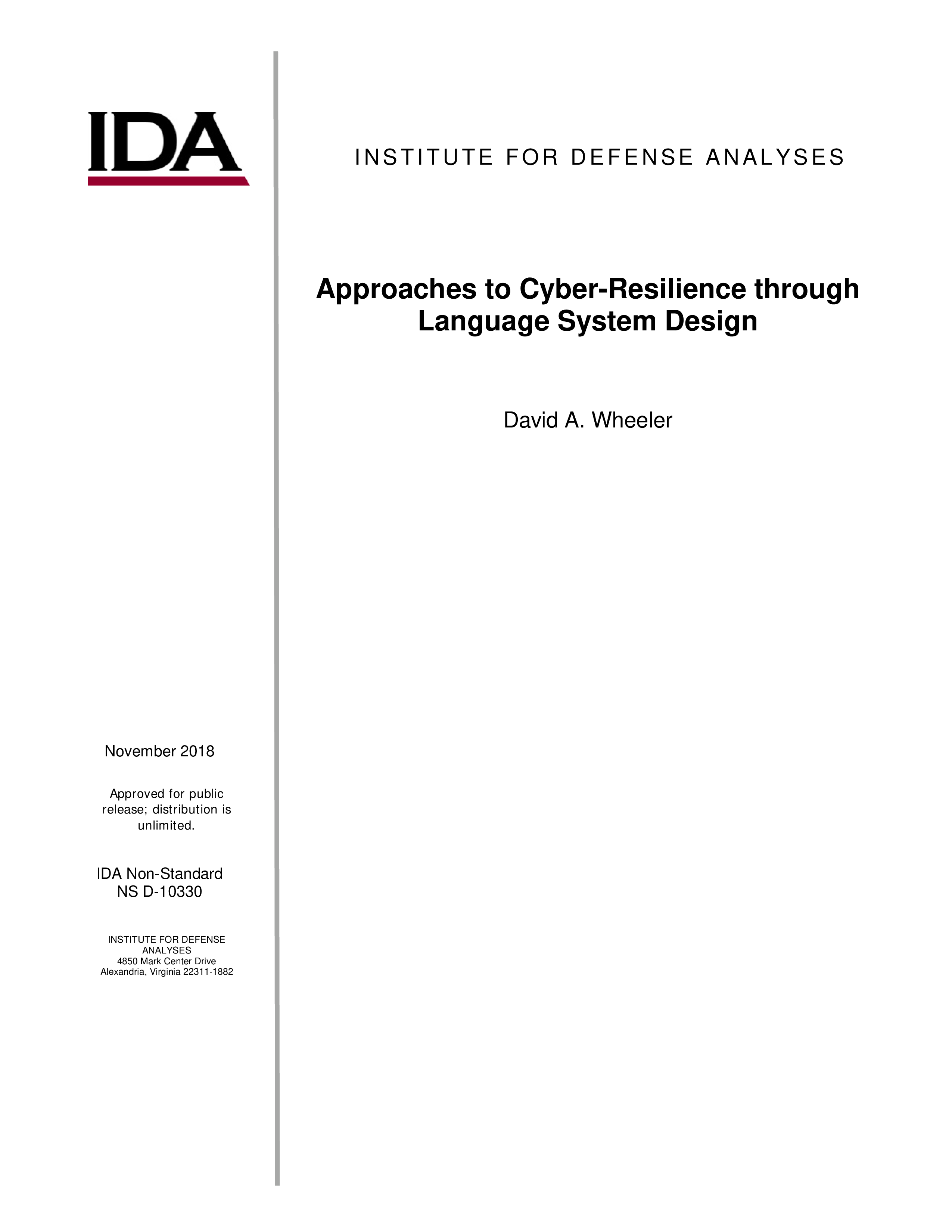Approaches to Cyber-Resilience through Language System Design
November, 2018
IDA document: D-10330
FFRDC: Systems and Analyses Center
Type: Documents
Division: Information Technology and Systems Division
Authors:
IDA document: D-10330
FFRDC: Systems and Analyses Center
Type: Documents
Division: Information Technology and Systems Division
Authors:
Authors
David A. Wheeler
See more authors

